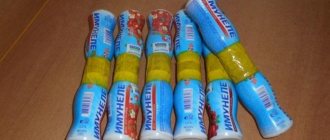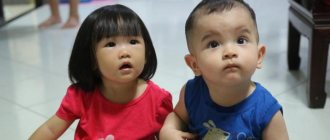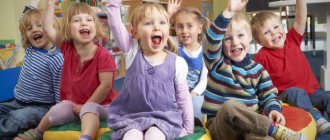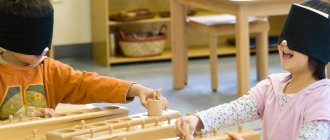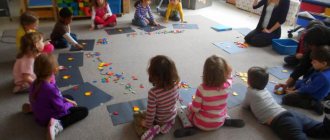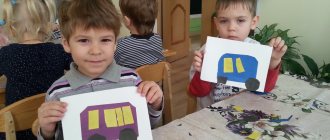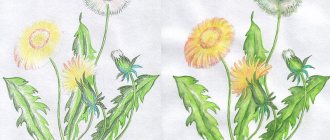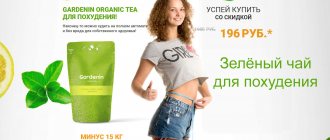DIY sports equipment - how to make dumbbells for children
They can be made from the most unusual materials.
Take:
- imunele bottles;
- wooden sticks;
- scotch;
- peas.
Unscrew the bottle caps. Insert wooden sticks into each pair to connect these containers in pairs. Wrap with tape around the necks. But first, pour dry peas or beans into the bottles. You can also use buckwheat, rice.
Such sports equipment for kindergarten will help children fall in love with sports, they will be able to develop the strength of their hands.
You can also use unnecessary skittles to make dumbbells. You will make slits on the side of the neck, put loose weights in them and connect these parts in pairs with tape or tape.
If you want to make sports equipment for children, you can also take regular plastic bottles with a volume of 300 or 500 ml. And for adults, you will use larger bottles.
- See also how to make a climbing wall for children in the country
Gymnastic equipment
Many exercises for correcting posture become more effective if performed with the help of gymnastic sticks. These items are also used to combat flat feet: they are rolled on the floor with the feet or walked on them. For walking, they also use inclined boards - smooth, ribbed, with padded bars.
The wall bars are excellent for exercises aimed at strengthening the muscles of the back and limbs. In addition to it, you can buy hanging bars or a horizontal bar.
Balancers have proven themselves to be excellent - devices that teach you to maintain balance. They can be in the form of small platforms for standing or paths for walking. An interesting option for children is a disk with a built-in labyrinth in which a ball runs.
This is what a balance beam exercise looks like
All equipment mentioned can be purchased at. Moreover, any product in our catalog fully meets the requirements for equipment for children's institutions.
We train the eye - do-it-yourself sports equipment
A ring throw will help with this. Take:
- plastic bottles with a volume of 1.5 to 2.5 liters;
- colored electrical tape;
- cardboard;
- scissors;
- glue.
Making master class:
- Cut out rings from cardboard. If you don't have very thick pressed paper, then connect the two rings in pairs.
- When the glue is dry, wrap them with colored electrical tape. Take plastic bottles, remove the labels from them, fill them with loose grain or sand so that these blanks are stable.
- Now invite the children to split into two teams and take turns throwing their rings at a certain bottle. Those who can string the most rings will win.
And here is another game called “Hit the Target.” It will also help train your eye. Also, the child will be able to develop coordination of movements, manual dexterity, speed of reaction, and attention. Take:
- thick fabric;
- scissors;
- threads;
- ball.
Making master class:
- Fold the fabric in half and stitch along the edges. Then place the ball here. See what size the holes need to be made so that this sports attribute fits into the grooves made.
- This game requires four people. Each of them will take a corner of the fabric at the base. The ball is placed in the center.
- Now the children need to throw it, but not high, so that the ball then falls into some hole. Here some of them will give up, others will take action in order to direct the projectile straight to the target.
Also, other sports equipment for kindergarten will help develop the children's eye. Cut out various shapes from cardboard. These can be rectangles, circles, triangles. Cover with self-adhesive film or cloth. Make a hole at the top to thread a thick rope through. Hang this attribute. Let your child throw objects, such as balls, inside. This way he will develop dexterity of movements.
Blog of Elena Ishimova: Non-traditional physical education equipment
Another Health Month event in our kindergarten is a competition of non-standard physical education equipment.
It was enough to imagine one thing, but having discovered a lot of interesting ideas on the Internet, I wanted many! Therefore, without inventing anything, we repeated an already existing experience. Having tried our simulators on children, I agree that the colorful multifunctional aids delight children! They enrich motor experience, allow you to diversify movements in a new, more interesting form, develop a sense of shape and color, imagination and creativity. Thanks to them, the children's interest in physical education has increased, and all the children join us during exercise! We present to you non-traditional physical education equipment, made from improvised (or simple) materials with your own hands and with the help of parents. Theater "Friends of Moidodyr"
, which will help strengthen children's hygiene skills: Soap, Sponge, Towel, Handkerchief and Microbe. An entertainment script for children with the participation of parents has already been prepared. Unfortunately, I didn't save the link.
“Get into the Cup”
is a guide for developing hand motor skills and eye control, and consolidating knowledge of primary colors. Made from cardboard laminated with tape, plastic bottles and colored self-adhesive tape. Knitted balls are tactile (soft and crunchy). link
“Traps”
- for developing dexterity, attention, reaction speed and eye. link
“Blow a butterfly off a flower”
guide helps to increase breathing volume and develops the ability to perform a smooth, long exhalation. Material: discs, self-adhesive tape, electrical tape, colored paper. link
Manual
"Colorful Snakes"
.
Goal: prevention of flat feet in children, development of fine motor skills, development of mathematical skills. Material: lids, rope. link Tactile bags
made of fabrics of different textures, filled with nuts, pumpkin seeds, pasta and cereals.
"Soft billiards"
and
“The Magic Blanket”
next time. And now I propose to look at the non-traditional physical education aids presented at the competition by other groups.
Soft floor checkers, sand throwing bags, massage button mats, "Golf of the Future", "Twister 0+" with left and right prints, Elephant ring thrower for rolling the ball, Snake, knitted Giraffe ring thrower with a basket for throwing balls, tactile mat for practicing forward bends.
Soft hopscotch, “traps” and “winders” for the development of hand motor skills, braids for doing exercises, “skis” (for two people at a time), stilts, a throwing cell for the smallest ones, a simulator for developing posture, massage gloves,
A trainer for long jumps, and a mat for stretching the muscles of the back and legs (sit on the shore-cushion, spread your legs to the sides and reach for the fish attached to the contact tape)…
A lot of work has been done by teachers and parents of children.
We shared first place with the teachers of the groups “Little Red Riding Hood” and “Cockerel”! HOORAY!!
ks337.blogspot.com
Homemade exercise equipment for outdoor games with your own hands
You can make these in a matter of minutes. Take a rope and tie it in some places with colored electrical tape.
Now you can use it to come up with a variety of outdoor games. Tie a rope low and let the kids step over it first. Then position the rope higher so they crawl under it.
The following sports equipment for kindergarten, created with your own hands, will help children develop coordination of movements.
Take:
- thin foam;
- thick dark fabric;
- multi-colored rags.
First, take scraps of colorful fabric and cut out numbers from them.
It is better to take a canvas whose edges do not crumble. Fleece or drape is perfect.
Cut a rectangle out of foam rubber. Two of the same, but a little larger, will need to be made from fabric. But it is more advisable not to cut these two rectangles, but to make one large one. Fold it in half. Topstitch along the edges. Leave free edges on one side to insert foam rubber here. Straighten the workpiece and sew it here on your hands.
Now you can lay out this rug. Give your child different tasks, for example, step on the numbers in order or in reverse order. You can arrange real fun competitions if there are two participants.
Balls
Very simple, but very effective equipment for the exercise therapy room - a variety of balls:
- small, smooth ones - they are needed for training fine motor skills (for squeezing with fingers and palms);
- small in size with “spikes” – suitable for developing coordination by throwing and catching them, as well as for massaging the palms;
- medicine balls – serve as a support or weighting agent in exercises to strengthen muscles;
- ordinary rubber ones - are in demand in various games in which they need to be thrown or rolled, thereby training dexterity and accuracy;
- fitballs - they are used to perform gentle exercises or for relaxation.
It is worth buying fitballs of various diameters for exercise therapy, so that it is convenient for children of different ages to exercise with them.
How to make sports equipment for kindergarten - interesting attributes
See also how you can make various sports equipment from improvised materials. These are called belboks. To make such sports equipment for children, take:
- laces or ropes;
- plastic bottles;
- plastic boxes from Kinder surprises;
- soft fabric;
- electrical tape;
- threads;
- markers.
Making master class:
- First, cut the plastic bottles. Now draw different flowers here with markers. To prevent children from getting hurt, cover the cut areas with fluffy cloth. You can use an old terry towel as it.
- Use a hot nail to make a hole in the middle of each lid, insert a cord here, and tie the end of it in a knot so that the laces are fixed.
- Attach them to the chocolate egg containers in the same way. Make a hole in this plastic with a hot nail, thread the lace and tie it with a knot on the back side. You can play with these devices in different ways, for example, throw the container up and catch it with the corresponding bottle.
Here is another DIY sports equipment for children.
These palm massagers are made from:
- plastic containers from Kinder surprises;
- Easter thermal stickers;
- pencils;
- thread
Take plastic chocolate egg containers and use a hot nail to make a hole in one side of each. The nail should be quite large so that you can then insert a pencil into these recesses.
To secure these wooden writing sticks, it is advisable to insert them immediately while the plastic is still hot. But if you didn’t have time to do this, then secure the blanks with hot glue.
Make small holes on the other side of the chocolate containers. You will thread threads here, from which you will create tassels. Secure them also with a hot gun.
If you want to decorate these containers, first heat them in hot water, then place iron-on stickers for regular eggs on top. Then you will make the holes.
Such homemade simulators will help children develop fine motor skills and tactile sensations.
It's interesting to twist the pencils between your palms and watch how the brushes develop in different directions.
If the kids are older and don't need plastic blocks, then show them how to transform these old toys. Let them and you draw figures of children doing various exercises. Such drawings should be on each side of the cubes.
Measure the sides that make up these toys, and use these measurements to cut out blanks from paper or cardboard. Now you will need to draw what you have planned, then glue each plate to a specific face of the cube.
To make these toys more durable, you can then additionally cover them with cellophane.
It is very interesting to play sports with such attributes at hand. You can have a competition and roll the dice lightly. Which side will be at the top, such exercises must be performed at the moment.
- Take a cube and write numbers on it. Which number will be at the top, this exercise must be repeated so many times. Therefore, it is advisable to start writing numbers from 10 and above.
- Here is another interesting sports craft made from scrap materials. First you need to fix the wooden pole on the plywood circle. If you do not have such a blank, then use an old wooden mop and attach an additional cross to it at the bottom. Paint these blanks, then the bottom can be decorated with fabric or a rug knitted from threads.
- Take large plastic bottles and cut off their tops. Then you will need to tie these cuts so as not to get hurt and get this beauty. After all, braids for funny characters are also created from these threads. And to tie the edges, you need to take a large needle, thread a thread of yarn into it and overcast the edges so that the turns are located closer to each other.
- All that remains is to use felt-tip pens to draw their facial features and attach them to wooden stands. You can make two holes in each bottle, thread a wire through it and attach these elements, or do it with tape.
If you have old tennis rackets that have broken strings, don't throw them away. See what you can make from such unnecessary attributes.
Premises and equipment for physical exercises
Topic 2.2.4. Premises and equipment for physical exercises
The effectiveness of implementing the tasks of educating preschool children in the field of physical education largely depends on the presence of a rational subject-play environment in a preschool institution. The most important factor in the influence of the environment on the formation of a child’s personality is the premises in which his activities are organized.
Room
for physical exercise, it should be spacious enough so that the “air cube” indicators approach the volume of ventilation. If the room is small, then the number of children studying at the same time should be limited in accordance with these indicators.
However, in preschool institutions these requirements are not always met. This is because many institutions do not have standard gyms. To conduct physical exercises, I equip small group rooms or utility rooms. They can conduct classes only in small subgroups, which is not always feasible due to the need to coordinate the work of a physical education specialist with the work of other employees of the institution.
It is known that the effectiveness of a child’s activities and the improvement of his well-being are influenced by rational coloring
room walls. When choosing a color, psychologists recommend using a range of colors in rooms for children from yellowish-green through yellow to orange. At the same time, blue and green colors are also suitable for children's rooms, especially those oriented to the south, as these colors create a feeling of coolness.
It should be especially noted that the equipment
, used in the physical education of preschool children, is usually painted in bright, varied colors. Thus, in order for children to clearly see the objects they are working with, it is advisable for the walls and floor in the gym to be plain and not bright.
Sometimes the floor in the gym is covered with carpet with a large, colorful pattern. On such a covering, markings and equipment are difficult to see, which does not meet the requirements for protecting the child’s vision. The use of synthetic turf in the gym limits the choice of means of physical improvement for preschool children. For example, when performing exercises in the kneeling position, redness of the skin of children is observed from contact with a synthetic carpet. In addition, such a coating requires particularly thorough cleaning.
View of the gym
should create a mood in the child for the upcoming activity. In this regard, painting the walls with fairy-tale characters makes the hall look like many rooms of a preschool institution (locker rooms, corridors, etc.). the use of removable pictures with monochromatic walls makes it possible to easily change the theme of the lesson. Often in preschool institutions you can see curtains on the windows of the gym, which does not meet hygienic standards (dust, reduced light).
In sports halls it is necessary to provide window guards. For this purpose, various gratings and meshes are used. For lighting the gym, fluorescent lamps protected by removable grids are most appropriate.
Due to the fact that at present there is no centralized provision of sports, gaming and physical education equipment and equipment,
preschool institutions have to take on this task themselves.
When selecting physical education equipment, it is mandatory that it meets pedagogical and hygienic requirements.
In a preschool institution it is necessary to have a sufficient number
a variety of sports and gaming equipment to ensure the participation of all groups (subgroups), their physical activity in the process of organized physical education classes and outdoor games, as well as in the independent activities of children in their free time.
It is important that the dimensions of the equipment
corresponded to the anthropometric indicators of children: body length in a standing and sitting position, length of arms, legs, volume of the chest, head. Only in this case can comfort of motor actions in a sports and gaming environment be achieved. The dimensions and weight of portable equipment must be commensurate with the capabilities of the children and can be moved by the children themselves.
One of the necessary requirements is security
children when using the equipment. Each benefit must be durable, reliable, suitable for use:
- Stair slats - of sufficient thickness and strength;
- Connections of various parts are reliable, without sharp corners or sharply protruding parts;
- Tools made of wood are well protected and polished.
The reliability and stability of large aids (gymnastic ladders, stands, monkey bars, crossbars and other pieces of equipment on which children climb) must be ensured. In order to provide insurance and prevent injuries in gyms, it is necessary to have a set of large and small mats
.
Physical education and sports and play equipment for preschoolers is made from different materials. It is important that these materials have a hygienic certificate
, would not have harmful effects on the body of children. It should be noted that for preschoolers, gymnastics and play equipment made of wood is preferable.
The presence of a wide variety of types of equipment in the kits is due to the specifics of the construction and content of classes and other forms of work in physical education, which consists in the fact that each form includes different types of physical exercises and games. For the correct organization of the physical education process, it is important to observe the principle of placing equipment at the place of use, taking into account its originality, which corresponds to the characteristics of motor actions characteristic of certain conditions. Thus, physical education and sports and gaming equipment for indoors
(physical education and gyms, swimming pool, group rooms) and
equipment for the site
(physical education area, group areas and other play areas).
Particularly highlighted is the equipment for organizing sports games
(basketball, badminton, gorodki, football, hockey) and exercises such as skating, cycling, skiing.
Equipment and supplies for the gym
As a rule, most of the physical education and sports equipment is used in gyms. The efficiency of equipment use increases significantly with its rational placement. The placement of different pieces of equipment depends on their dimensions
and
purpose
.
So, the gymnastic wall is installed permanently, firmly attached to the wall. Ropes, poles, rope ladders are fixed to the ceiling using special devices - hooks, monorail, etc. Large pieces of equipment,
such as gymnastic benches, booms, cubes, are placed along the walls of the room. For boards and ladders with hooks, a place is provided where they can be hung or laid so that they do not interfere with children’s games and activities.
Small physical education equipment
- balls, bags with weights, cubes, clubs - it is advisable to place them in sectional cabinets, on special shelves, racks, in drawers, also located along the walls of the gym. It is best to place hoops, cords, and jump ropes on the walls in different places in the room on special hooks and hangers. For stretching nets (for playing with a ball), pulling cords, elastic bands (for hanging small objects, for crawling, jumping over), fastenings in the form of brackets, clips, carabiners are convenient. They should be placed in pairs at different levels of opposite walls.
Equipment must be located so that children can freely
approach it,
independently
, without interfering with each other. It is advisable to leave the middle of the hall free. It contains a variety of aids for games and activities organized by the teacher or the children themselves.
Modern production technologies and materials have made it possible to change the appearance of the gym. Large companies, Vesco, etc.) constantly offer preschool institutions equipment that has successfully proven itself in Europe and America. Today in the halls you can find trampolines, dry pools, parachutes, etc. Large-sized multifunctional environment-forming objects
– modules that promote the gradual development of generalized conditional actions, an imaginary situation, and also naturally enrich the child’s range of movements.
In the early 80s. XX century In Switzerland, and then in Italy, Germany and other countries of Western Europe, large bright multi-colored balls with a multi-purpose orientation of impact appeared. The new tool is called “fitball”.
The development of new health technologies has given impetus to the use of special gymnastic balls in the practice of physical education, health and sports work with preschoolers. The ball can be used both as a training device and as an object for weights. In preschool institutions, fitballs are used primarily to solve health problems. They make it possible to individualize the treatment and educational process as much as possible due to the wide possibilities for posture correction in both the frontal and sagittal planes.
simulators have begun to be actively used in preschool institutions.
as a means of increasing children's physical activity. When used systematically in a preschool institution, they are a reliable means of preventing physical inactivity in children. It should be noted that exercise equipment designed for adults cannot always be adapted for use with children.
Saturating the gym with new equipment does not reduce the importance of physical education equipment, which has proven itself over many decades of practice in organizing physical education and health work with preschoolers. A modern gym cannot do without gymnastic walls, benches, mats, rubber balls of different diameters, hoops, jump ropes, etc.
Equipment and supplies for outdoor activities
For the full physical development of children in a preschool institution, the playground must be well equipped. This is especially important for optimizing the physical activity of children in the summer.
Physical education area
should consist of a physical training ground itself and a number of sports and play areas:
- Jumping pits;
- Treadmill;
- Tracks with obstacles;
- Playgrounds for playing small towns, mini-football, and hockey.
Sports and gaming areas can be directly adjacent to the physical education site or be located at any other convenient location on the site. This functional division of physical education areas allows you to simultaneously organize games and activities with a large number of children of different ages and physical fitness. In the winter season, they are equipped with sliding tracks, an ice rink, slides, and a place for playing hockey. A ski track is laid along the perimeter of the kindergarten site.
The main space of the physical training ground, as a rule, remains free. All the necessary equipment - 5-6 spans of a gymnastic wall, beams of different types (inclined, horizontal at different levels), monkey bars, throwing targets, a device for hanging ropes, a pole, a rope ladder - is placed around its perimeter. In the middle of the longitudinal sides of the site, it is advisable to install racks for tensioning nets, cords, etc.
Small inventory
for sports games (nets, rackets, shuttlecocks, balls, towns, etc.), aids for outdoor games and exercises (jump ropes, hoops, cords, rings, balls, etc.) are brought to the site as needed.
If there is enough free space around the physical training ground, it is advisable to equip a treadmill
, the width of which must be at least 1.5 m. It is important that it has a straight segment of at least 40 m in length. This will allow not only running exercises, but also observation of their implementation at a 30-meter distance in a familiar environment for children .
an obstacle course near the physical training ground.
for older preschoolers. This arrangement of the obstacle course will make it possible to widely use the equipment located on it in the independent motor activity of older preschoolers.
On playgrounds for children, it is desirable to have natural earthen slides, which in the summer can be used for entering, running down, and in the winter - for sliding down on a sled.
Pool equipment and supplies
To organize classes to teach children to swim, the pool must have equipment to ensure safe swimming and insure children in the water. These are lifebuoys, floats, dividing paths, a long pole, etc.
A variety of aids and toys are needed for the most effective organization of swimming lessons, for various exercises and games on the water. These include:
- Foam boards;
- Inflatable toys (rubber circles, balls, toys in the form of fish, crocodiles, turtles, etc.);
- Small toys made of dense rubber (sinking, for finding under water);
- Hoops for playing games with immersion in water.
The number of such aids and toys must correspond to the number of children simultaneously exercising in the pool. They should be colorful, bright, and attract children to activities and games in the water.
In addition, the pool must have devices that allow you to monitor and maintain the appropriate sanitary and hygienic condition of the room and water.
Physical education and gaming equipment for group rooms
A minimum set of physical education and gaming equipment must be provided in group rooms. This is especially important for children of early and early preschool age.
In groups for young children
, in addition to playpens for the little ones, in accordance with their age capabilities, a slide with a ramp and a ladder, a stepladder, and two or three spans of a gymnastic wall are installed. Here it is advisable to have boards smooth and with a ribbed surface, a set of boxes, baskets, massage paths and with markings, as well as sets of balls, marbles, rings, rattles, and attributes for games. Soft objects are good for kids - various modules, rollers, segments, cubes, disks, all kinds of motor toys are especially important - wheelchairs, strollers, cars, carts, etc.
In groups of older children
in addition to small aids (balls, jump ropes, cords, sticks, hoops, etc.), you must have sets of equipment and inventory for organizing both outdoor and sports games (skittles, ring throws, gorodki, badminton, basketball, table tennis, etc. ). Children can take these benefits to the area for games and exercises during walks. If there is space in group and locker rooms for children, you can install one or two spans of gymnastics walls, one of the sports and gaming complexes, and place the simplest exercise equipment for children to use independently. But at the same time, we should not forget that older preschoolers should also be monitored by the teacher during games and exercises on the specified equipment.
Devices necessary for diagnosing the physical condition of preschool children
For an objective assessment of physical development and physical fitness in medical, methodological rooms or in a gym there must be:
- Height meter;
- Posture assessment device;
- Phonendoscope;
- Device for measuring blood pressure (tonometer);
- Spirometer;
- Stopwatch;
- Roulette;
- Tape measure;
- Tailor's measuring tape;
- Wrist dynamometer;
- Pedometer to determine the number of movements;
- Compass.
In recent years, the possibilities for assessing the activity of various body systems have expanded significantly. One of the most promising areas is the use of heart rate monitors
to assess the reaction of children’s bodies to various physical activities and performing physical exercises of varying degrees of difficulty.
The device enables reliable and convenient wireless heart rate measurement and measures pulse with the accuracy of an electrocardiogram. The monitor allows you to observe the current heart rate level without disturbing the overall rhythm of the exercise being performed. Observation can be done while walking, swimming, skiing, or while performing other exercises.
Heart rate monitors are used in research because they are easy to use. The device consists of an elastic belt containing electrodes that measure heart rate, and a monitor (shaped like a watch). The elastic belt is attached to the pectoral muscles, and the monitor is attached to the wrist.
It should also be noted that heart rate monitors have a wide price range. The cheaper the device, the correspondingly fewer functions it performs. When conducting research with preschool children, the following should be considered first:
- The device must provide for transferring data from the monitor to the computer using an infrared port. Other options for reading information have significant errors when transferring data;
- More expensive heart rate monitor models include transmitter coding. Uncoded transmitters should not be used in group studies of preschool children. In cases where there are multiple heart rate monitors within a study area within a distance of 1 meter, an unencoded monitor will read signals from other monitors in that area. This may cause incorrect readings. Even if one monitor is coded and the other is not, the readings may also have significant errors.
In a study with preschool children, it is advisable to use the Polar RS200sd running computer model with an additional POLAR S1 device, which is attached to shoes and provides control over speed and distance along with heart rate measurement. The device provides the following functions:
- Displaying speed and distance on the monitor;
- Setting a target pace;
- Showing the difference between the current pace and the specified target;
- Signal of deviation from a given pace, etc.
Studying the reaction of children's bodies to physical activity using heart rate monitors makes it possible to obtain objective information. However, this creates certain difficulties in organizing the educational process in physical education in a preschool institution. Therefore, during a physical education lesson, it is advisable to assess the functional state of children based on external signs of fatigue or pulse. At the same time, complex diagnostic systems, in particular heart rate monitors, can be used 2-3 times a year to obtain more objective indicators.
In preschool institutions you can increasingly find the biofeedback device “BFB - Breathing”.
They make it possible to visualize the processes occurring in the body.
“BFB - Breathing” allows you to determine the difference in pulse values during inhalation and exhalation, which is currently called respiratory arrhythmia of the heart (RAS). Quantitatively, this parameter is measured in the same quantities as the pulse, i.e. in the number of beats per minute. This parameter is universal - it reflects the quality of breathing, the state of the immune system and the body’s ability to adapt. The higher the DAS level, the better the body is protected from diseases.
It should also be noted that DAS reflects the degree of coordination of the respiratory and cardiovascular systems. With good diaphragmatic breathing, an increase in DAS is observed, and it begins to change in the phase of the respiratory cycle. Moreover, by consciously changing breathing parameters, you can influence heart rate, and ultimately DAS. The use of the device provides the opportunity to individualize health programs, i.e. selection of exercises necessary to achieve a programmable healing effect.
How to make sports equipment for home from tennis rackets?
Take these sports attributes, as well as a suitable translucent fabric and thread with a needle.
Take the fabric, cut out a cone-shaped blank from it, so that you can then sew such a net. Remove the fishing line from the racket, place the top part of this net here, wrap it around the racket and hem it here with a needle and thread.
Well, if children want, they can play badminton even with old attributes. But first, these rackets need to be updated. To do this, cut out blanks from cardboard to the size of the working parts of the rackets. Then you need to sew them to the base with threads. At the same time, you will sew on the petals of such a sunflower to create interesting sports attributes for children.
Exercise equipment
To work out certain muscle groups, strengthen the muscular corset of the spine and improve overall physical development, it is worth purchasing exercise equipment for exercise therapy. These can be units that imitate skiing, cycling or rowing, as well as those designed for arm and leg presses, for pumping the abs.
For kindergarteners and primary schoolchildren, children's exercise equipment is needed - they are smaller in size and designed for lighter loads. These devices are also painted in bright colors, which enhances their appeal to children.
How to make sports equipment with your own hands - a velomobile for a child
This vehicle will also help children train their sports skills.
You can make it from an old bicycle, and you can take the wheels from an unnecessary baby stroller. You will also need round and square metal pipes, various fasteners, components and tools.
First, assemble the frame of the velomobile. To do this, you need to cut pipes of a certain length with a grinder, then fold them and connect them using a welding machine. Also provide wheel mounts to secure them. At this stage, weld a small round tube from the bicycle to the front part where the handlebar will be located.
Here's how to make a children's velomobile next, then the sports equipment will be replenished with such a useful thing. Attach a metal tube to the rear wheels on which the chain will be wound.
Then attach the part from the bicycle closer to the steering wheel, then fix the chain holder along with the pedals. You will also borrow these parts from an old bicycle.
Secure the steering column in front. Place the bike guard on so that it covers the chain. Now you can spray paint these metal parts.
Take a suitable chair so that your child can sit comfortably in it. To do this, you can purchase a regular plastic child seat and remove the legs from it. This is the kind of velomobile you will get.
The child will be able to develop his legs and hip joints while riding this sports device. And how much delight there will be!
And such a velomobile is stable, it is suitable even for those children who have not yet learned to ride a bicycle. The same applies to the next car. Such sports equipment for kindergarten and home will become a favorite toy for children.
For such equipment, we took parts that were already in use. Here's what you'll need:
- gear and pedals from a bicycle;
- stroller wheels;
- aluminum pipes;
- aluminum shanks;
- fastenings;
- plywood;
- tools;
- dye.
First you need to assemble the car drive. Various bodies can then be attached to such a chassis, since such a base is universal. This chassis consists of 4 sleepers, which are mounted on 2 rails. All these parts are made of wood. You can also attach a metal bicycle structure with pedals to a strong wooden board. But first you will need to cut this part with a grinder, then use tools and components to fix it here.
Secure the parts with secure bolts. Then fix the wooden planks and components made from these materials on the base, make holes with a drill and insert metal rods here on which the wheels will be attached.
Now secure the front axle beam with the bolt. Don't forget to lubricate it with machine oil so that the parts rotate better. Place this workpiece on the bearing and secure the chain.
To drive the drive wheels, you will need a so-called sprocket. Take pipes made of galvanized or chrome-plated steel. The rear sprocket must be clamped with nuts between two washers on the rod. Wind electrical tape between the tube and the rod.
Attach the instrument panel and steering wheel.
Then you need to decorate the car to make it look like a real one.
Do-it-yourself sports equipment can also be made for very young children who are learning to walk or have just learned to walk. Such children also need to train their arms, legs, and muscular frame. And this playpen will help with this. It will also free up the time of parents who will be doing things while looking after the child.
